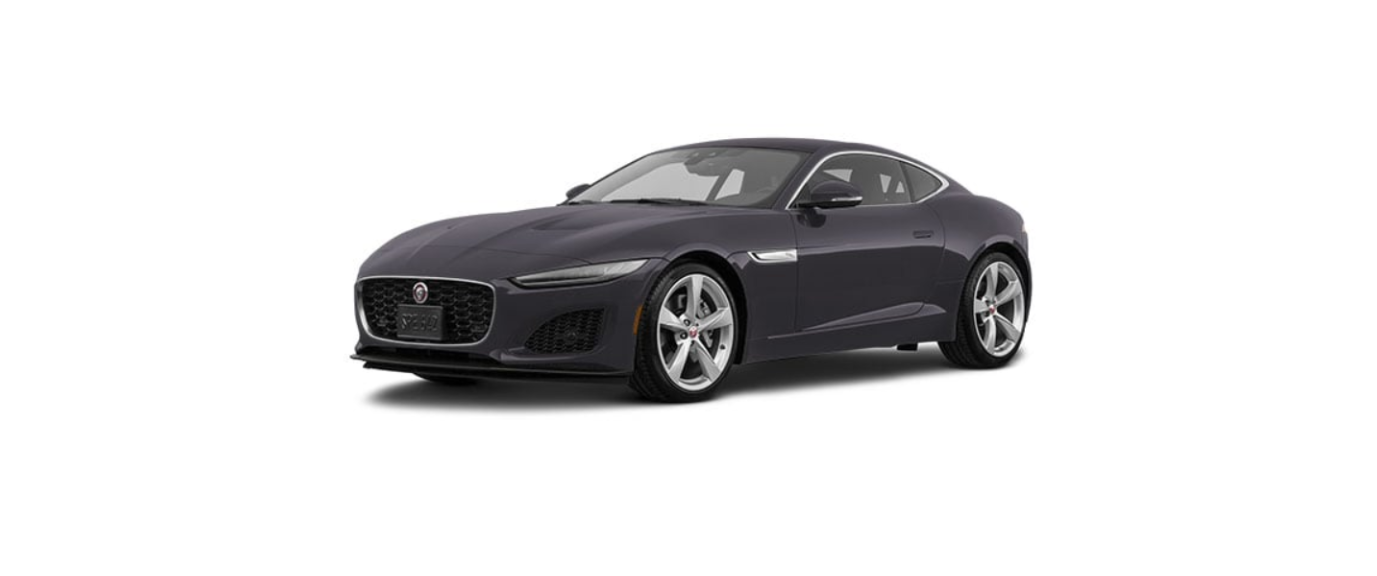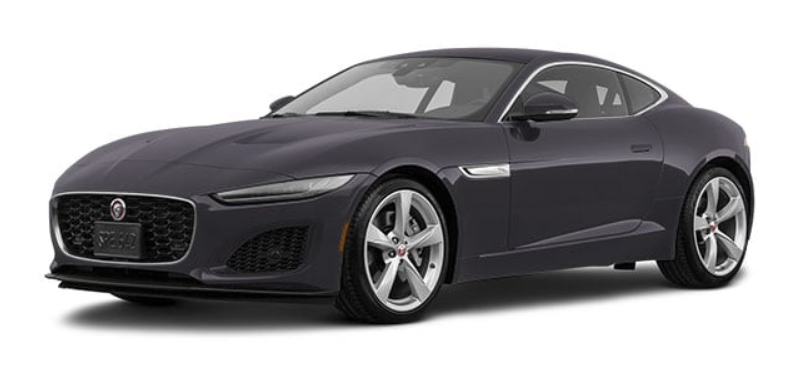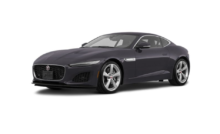2022 Jaguar F-TYPE Parking Features Owners Manual




2022 Jaguar F-TYPE Parking Features


PARKING FEATURES SAFETY
Make sure the following warnings and cautions have been read and fully understood before driving the vehicle.
Failure to use the parking systems safely could result in damage to the vehicle, or an accident, leading to serious injury or death.
The sensors for the parking systems do not detect moving objects, such as children and animals until the objects are dangerously close. The driver is responsible for driving with due care and attention during low-speed maneuvers.
The parking features are driving aids only. The driver is responsible for driving with due care and attention during parking maneuvers.
The driver must maintain full control of the accelerator and brake pedals throughout the parking maneuvers.
All sensors must be kept clean and free from debris or obstructions, e.g., leaves, mud, snow, ice, frost, or insects. Failure to keep the sensors clean may result in sensor miscalculation or false indications.
The parking features must not be used if a sensor is damaged, or the bumper is damaged sufficiently enough to affect a sensor mounting point. Failing to follow these guidelines may result in sensor miscalculation or false indications.
The parking features must not be used if a sensor is obstructed by items attached to the vehicle, e.g., bumper covers, a cycle rack, or stickers. Failing to follow these guidelines may result in sensor miscalculations or false indications.
When using the park assist feature, the Parking Exit mode operates only when the vehicle has been parallel parked. Parking Exit does not maneuver the vehicle from a perpendicular parking space. The driver is responsible and must not use Parking Exit mode to exit a perpendicular parking space.
When using the park assist feature, do not perform a Parking Exit maneuver until the instrument panel instructs the driver to do so.
Although the vehicle takes control during the parking or exiting maneuver, the driver must maintain full control of the accelerator and brake pedals throughout. When the maneuver is not as expected, take control of the steering and make any necessary adjustments.
Make sure the relevant safety warnings and cautions have been read and understood before operating the touchscreen. See TOUCHSCREEN SAFETY.
The parking features sensors may also be externally influenced by noise generated from air brakes, emergency vehicles, motorcycles, pneumatic drills, and high wind. The driver is responsible for driving with due care and attention during low-speed maneuvers.
The sensors for the parking systems may not detect some obstructions. For example, narrow posts or small objects close to the ground. Objects above sensor level may not be detected, e.g., when approaching a flatbed truck, the protruding part of the flatbed may not be detected. Additionally, the parking system operation may be limited, when maneuvering the vehicle near wooden objects, e.g., a wooden post.
Do not aim a high-pressure water jet directly at any of the sensors when washing the vehicle. Only use approved vehicle shampoo. Do not use abrasive materials, or hard or sharp objects, to clean the sensors. Failure to follow these guidelines may result in damage to the system or cause a system fault.
Particular care must be taken when using the parking features if accessories are fitted to the front or rear of the vehicle. For example, a cycle rack mounted in a position where it obstructs the operation of the parking sensor(s). If the affected sensor(s) is obstructed, the sensor(s) only indicates the distance from the bumper to the cycle rack. Any obstacle beyond the detected accessory may not be indicated on the touchscreen display.
Park assist must not be used if a temporary spare wheel is in use.
When using the park assist feature, do not use Parking Exit when leaving a perpendicular parking space. Parking Exit is programmed for leaving only parallel parking spaces. Damage to the vehicle, or surrounding objects, may occur if a Parking Exit is used when leaving a perpendicular parking space.
USING THE PARKING AID
Make sure the relevant safety warnings and cautions have been read and understood before operating the parking features. See PARKING FEATURES SAFETY
The sensors must be kept clean to maintain accuracy and performance.
The parking aid pop-up screen is displayed when a possible threat is detected.
The parking aid settings pop-up menu is only accessible when the parking aid feature is enabled, and the parking aid pop-up screen is displayed.
- Settings icon: Touch to select the SETTINGS pop-up menu. Touch the Parking aid settings to access the PARKING AID SETTINGS screen.
- Parking aid icon: Touch to activate the parking aid system.
- Vehicle steering trajectory lines: Projected reversing path, based on the current steering wheel position.
- Parking aid sensor detection zones:
Gray blocks indicate objects detected that do not pose a threat, i.e., not in a collision path with the vehicle.
Colored blocks indicate objects detected that pose collision threats.
- Camera icon: Touch to select the rear camera feature. See REAR CAMERA.
- Volume icon: Touch to lower the volume of the warning tones for the current parking aid maneuver. See PARKING AID VOLUME.
The parking aid system assists the driver while maneuvering the vehicle at low speed in confined spaces. The touchscreen displays object tracking along the front and rear of the vehicle, when active. The front and outer rear sensors monitor a fixed distance around the vehicle. The inner rear sensors monitor a greater distance at the rear of the vehicle.
The parking aid system also detects low objects, e.g., curbs in the front and rear detection zones. The curbs are tracked as the vehicle approaches, even when the curbs are no longer seen by the sensors.
While the vehicle is passing an object within its sensor range, the vehicle’s integrated systems calculate its steering trajectory. The touchscreen displays the trajectory lines (3) in the parking aid monitored area. The steering trajectory lines indicate the projected path of the vehicle, based on the current steering wheel position.
To configure the appearance of the trajectory lines:
- Select the settings icon (1) to access the PARKING AID SETTINGS pop-up menu.
- Select Trajectory lines ON or OFF.
The trajectory line selection is retained across all ignition cycles. If a detected object is calculated to be a collision threat, it is displayed as colored blocks. The distance from a collision threat is color-coded: yellow to amber to red, with red being the closest. Other detected objects that are not a collision threat are displayed as gray blocks.
When the parking aid system is active, the system only provides information on obstacles when a threat is detected. A warning tone sounds, which increases in speed as the vehicle approaches the object. The tone becomes continuous when the object is within 500 mm of the vehicle. The warning tone sounds from the area in which a collision threat has been detected.
At vehicle start-up, the front sensors may not detect low objects, even if the objects were detected during the original parking maneuver.
To manually enable the parking aid system:
- Touch the parking aid icon (2). The icon illuminates while the parking aid system is enabled.
- Touch the icon 2 again to disable the system. The LED extinguishes.
The parking aid system also activates if Reverse (R) or Neutral (N) is selected.
The parking aid system can be set to activate automatically for when:
- The vehicle’s speed falls below 6 mph (10 km/h).
- Drive (D) is selected.
To enable the auto on feature:
- Select the settings icon (1) to access the PARKING AID SETTINGS pop-up menu.
- Select Automatic PDC ON.
The auto-on feature selection is retained across all ignition cycles.
PARKING AID VOLUME
To adjust the volume of the parking aid warning tones, rotate the media volume control while the tones are active. See MEDIA CONTROLS.
Touch the volume icon, in the parking aid or camera features screen, to reduce the volume for that maneuver only. See USING THE PARKING AID and REAR CAMERA.
PARKING AID LIMITATIONS
The parking aid system deactivates and cannot be reactivated if:
- The vehicle’s speed is greater than 10 mph (16 km/h).
- Park (P) is selected.
- There is a system fault.
If a parking aid system fault is detected, the instrument panel displays a warning message. If all of the sensors are clean and the fault is not rectified after an ignition cycle, contact a retailer/authorized repairer.
PARKING AID SYSTEM FAULT
If a parking aid system fault is detected, a long, high-pitched tone sounds and the parking aid icon flashes. See USING THE PARKING AID.
The touchscreen displays a parking aid warning message. If all of the sensors are clean and, after restarting the engine, the issue persists, contact a retailer/authorized repairer as soon as possible.
PARK ASSIST
Make sure the relevant safety warnings and cautions have been read and understood before operating the parking features. See PARKING FEATURES SAFETY
To cancel an active park assist maneuver, at any point, hold or turn the steering wheel. Alternatively, touch the park assist icon. See SELECTING PARK ASSIST.
All of the doors and the trunk lid or tailgate must be securely closed when using park assist.
During any park assist maneuver, the parking aid system remains active and emits a warning tone when objects are detected close to the vehicle.
The park assist system is an aid to maneuver the vehicle in and out of a parallel parking space. Park assist takes control of the vehicle’s steering system to maneuver the vehicle.
The park assist system comprises two modes:
- Parallel Parking: For reversing into a parking space that is parallel to the vehicle.
- Parking Exit: For exiting only parallel parking space.
The instrument panel displays all park assist instructions.
SELECTING PARK ASSIST
Make sure the relevant safety warnings and cautions have been read and understood before operating the parking features. See PARKING FEATURES SAFETY
- Parallel Parking: Touch to select the Parallel Parking mode.
- Cancel Park Assist: If parking assistance is no longer required, touch Cancel Park Assist to exit the selected park assist mode.
- Parking Exit: Touch to select the Parking Exit mode.
- Park assist icon: Touch to select the PARK ASSIST pop-up menu.
Touch the park assist icon (4) to access the PARK ASSIST pop-up menu. Select the required mode. The icon 4 illuminates while the park assist system is enabled. Touch icon 4 again to disable the system. The LED extinguishes. The instrument panel displays the selected mode. Follow the instructions and alerts displayed in the instrument panel to complete the required maneuver.
Park assist cannot be activated if Reverse (R) is selected.
USING PARK ASSIST
Make sure the relevant safety warnings and cautions have been read and understood before operating the parking features. See PARKING FEATURES SAFETY
Select Parallel Parking. See SELECTING PARK ASSIST. As the vehicle is driven forward, the size of a potential parking space, on the front passenger’s side, is assessed. To search for a space on the driver’s side, use the turn signals to signal a turn in that direction.
For park assist to search effectively for a space, the park assist system must maintain a distance of 1.6 ft to 4.9 ft (0.5 m to 1.5 m). The distance of 1.6 ft to 4.9 ft (0.5 m to 1.5 m) is between the vehicle and the row of parked vehicles or obstacles.
The park assist auto-searching feature becomes active when the vehicle’s speed is less than 18 mph (30 km/h). When park assist is selected, a space may already have been detected by the auto-searching feature. The instrument panel displays an appropriate message.
Park assist may determine that other vehicles are too close, on either side, to perform a parking maneuver. A detected space can be rejected, even if it is large enough for the vehicle. The driver retains the option to switch park assist off and attempt the maneuver manually. The park assist sensors assess the curbs in the parking space so that the vehicle can be aligned against it. When the curb shape is irregular, or not detectable, vehicles either side of the parking space are used for aligning the vehicle. When there is a tall object alongside the curb, e.g., a post or trash can, it will affect vehicle positioning. The vehicle’s positioning is affected by being further away or closer to, the curb than normal. Occasionally, this may result in the curb being mounted. When a suitable space is found, a short confirmation tone sounds and the instrument panel displays a confirmation message.
When the vehicle is parallel parked and the ignition is switched off, the parking assist memory is cleared. When the ignition is switched on again, the turn signals must be operated to indicate an exit intention. The operated turn signal notifies the park assist system of which side the driver intends to leave the parking space.
Select Parking Exit. See SELECTING PARK ASSIST.
For the Parking Exit mode to operate correctly, the vehicle must be parked in a space where other vehicles or objects are either:
- Parked in front of the vehicle.
- Parked in front and behind the vehicle.
When the vehicle’s speed exceeds 3 mph (5 km/h) during the maneuver, the park assist system displays a warning message. The message is displayed until the vehicle’s speed decreases to less than 3 mph (5 km/h). When the vehicle’s speed exceeds 4 mph (7 km/h), park assist deactivates.
- During any park assist maneuver, the parking aid system remains active.
- For both park assist modes, follow the instructions in the instrument panel until the parking or exiting maneuver is complete.
- If a system fault is detected, a continuous tone sounds and the instrument panel displays a warning message. If all of the sensors are clean and the fault is not rectified after an ignition cycle, contact a retailer/authorized repairer.
PARK ASSIST LIMITATIONS
Make sure the relevant safety warnings and cautions have been read and understood before operating the parking features. See PARKING FEATURES SAFETY
Park assist is not available if:
- The vehicle’s speed is greater than 18 mph (30 km/h).
- Park (P) is selected.
- Reverse (R) is selected.
- There is a system fault.
The park assist system may provide inaccurate results if:
- The size or shape of the parking space changes after it was measured.
- There is an irregular curb alongside the parking space, or the curb is covered with leaves, snow, etc.
- The vehicle is being used to transport a load that extends beyond the perimeter of the vehicle.
- The sensors are misaligned due to a minor collision or impact.
- The vehicle had a repair or alteration that was not approved by a retailer/authorized repairer.
- The vehicle is fitted with non-approved wheels or tires.
- The vehicle’s tire pressures are not set to the vehicle’s recommended specification.
- The vehicle’s tires have significant tire wear.
- The vehicle is fitted with replacement tires. After the normal running-in period, the system adapts to the replacement tires.
- One of the parked vehicles has an attachment at a raised height such as a flatbed truck, snow plow, or hoist.
- The parking space is located on a corner or bend.
- The sensors are dirty or covered in mud, ice, snow, etc.
- The weather is foggy, raining, snowing, etc.
- The road surface is uneven or rutted.
- The vehicle encounters an obstruction that is thin or wedge-shaped.
- The vehicle encounters an obstruction that is elevated and/or protruding, such as ledges or tree branches.
- The vehicle encounters an obstruction with corners and sharp edges.
- The sensors are in close proximity to hot exhaust gases from nearby vehicles.
- The sensors are in close proximity to noise generated from emergency vehicles, motorcycles, etc.
- The sensors have been damaged during vehicle cleaning.
PARK ASSIST TROUBLESHOOTING
Make sure the relevant safety warnings and cautions have been read and understood before operating the parking features. See PARKING FEATURES SAFETY
The following may be a reason why the park assist system is not searching for a parking space:
- The system may not be activated.
- The vehicle may be traveling above 18 mph (30 km/h).
- The sensors may be covered or partly obscured by dirt, mud, ice, or snow, etc.
- The approach angle may not be suitable.
The following may be a reason why the park assist system does not offer a certain parking space:
- The sensors may be covered or partly obscured by dirt, mud, ice, or snow, etc.
- The space may not be large enough to accommodate the vehicle.
- There may not be enough space on the opposite side of the vehicle for the front to swing out during the maneuver.
- The vehicle may have been driven more than 5 ft (1.5 m) from the row of parked vehicles.
- The vehicle may have been driven within 16 in (41 cm) to the row of parked vehicles.
- The vehicle may have been driven in Reverse (R). Park assist searches for a parking space only when the vehicle is in Drive (D).
- The approach angle may not be suitable.
The following may be a reason why the park assist has not positioned the vehicle accurately within the space:
- One or more of the system limitations criteria may not have been met. See PARK ASSIST LIMITATIONS.
REAR CAMERA
The driver is responsible for detecting obstacles and estimating the vehicle’s distance from them when maneuvering the vehicle. Driver distraction can lead to accidents, potentially causing serious injury or death.
The camera must be kept clean and free from debris or obstructions, e.g., ice, frost, snow, leaves, mud, or insects. Failure to keep the camera clear may result in miscalculations or false indications, and can lead to accidents, potentially causing serious injury or death.
Do not attach stickers or objects to the rear bumper that may interfere with the camera. Failure to keep the bumper clear may result in miscalculations or false indications and can lead to accidents, potentially causing serious injury or death.
Some overhanging objects or barriers, which could cause damage to the vehicle, may not be detected by the camera. The rear camera is located below the rear license plate. When Reverse (R) is selected, the touchscreen automatically displays a high-definition, color image from the rear of the vehicle. Overlaid on the image are lines to aid with reversing and parking.
The rear camera display has priority over the parking aids display and many other touchscreen features. To cancel the rear camera display, at any time, touch the home icon or the return icon. See TOUCHSCREEN HOME MENU.
- Parking guidance broken lines: Indicate the safe working width of the vehicle. The door mirrors are included.
- Parking guidance solid line: The projected reversing path, based on the current position of the steering wheel.
- Parking aid information: Colored blocks indicate detected collision threats.
- Luggage compartment access line: Do not reverse beyond this line if access to the luggage compartment is required.
- Parking aid plan view: Touch to view the full-screen view of the parking aid feature.
- Parking aid graphics icon: Touch to switch the parking aid graphics on or off.
- Volume icon: Touch to lower the volume of the beeps for the parking aid system. See PARKING AID VOLUME.
The rear camera display discontinues automatically when either of the following applies:
- Drive (D) is selected for longer than 5 seconds.
- Drive (D) is selected and/or the vehicle’s speed is greater than 11 mph (18 km/h).
Recent Posts
VW Jetta Engine Fuse Box Diagram
Access the comprehensive 2010-2018 VW Jetta Passenger Fuse Box Diagram to troubleshoot electrical issues effectively.…
VW Jetta Passenger Fuse Box Diagram
Explore the comprehensive VW Jetta Passenger Fuse Box Diagram to troubleshoot electrical issues effectively. Understand…
2023 Ford F-150 Lightning Fuse Box Diagram
Under Hood Fuse Box Location Remove the front luggage compartment cover. Under Hood Fuse Box…
2022 Kawasaki NINJA H2 SX SE Brake Lever Adjuster Owner’s Manual
2022 Kawasaki NINJA H2 SX SE Brake Lever Adjuster Owner's Manual NOTICE Only adjust the front…
2023 Land Rover Range Rover Evoque Exiting The Vehicle Owners Manual
2023 Land Rover Range Rover Evoque Exiting The Vehicle SINGLE LOCKING WARNING Before exiting the…
2023 Land Rover Range Rover Evoque Front Seats Owners Manual
2023 Land Rover Range Rover Evoque Front Seats FRONT SEAT SAFETY Make sure to read…
